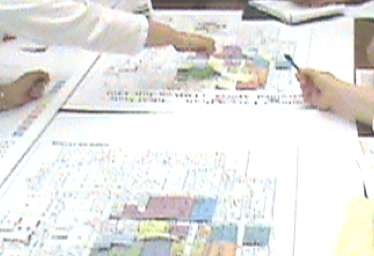Lean Healthcare – New Facility DesignOptimizing flow and layout for a new Healthcare facility

· When a healthcare organization has committed to constructing a new building, it represents a unique opportunity to design the physical layout of a facility to be integrated with and facilitate process efficiencies (see Figure 1). The process of Lean/TPS facility design and layout is a new and exciting discipline, and is able to leverage Lean/TPS tools and methods.
· Architects are customarily compensated based on the number of square feet designed, so there is an incentive to maximize the designed space.
· Staff are asked to speculate on future growth, and this future space is built into the new plan.
· With the current “use it or loose it” facility management philosophy, departments make use of this future space immediately.
· Wastes (such as motion, transportation, excess inventory, etc…) result, and when the space is needed in the future, it is not available, and even more new construction is required.
challenge
· Design a workplace that is good for patients, staff, flexibility, technological advances, and growth
· Integrate staff and physician expertise and process knowledge earlier and much more thoroughly than is done in architectural design processes
· Increase the percentage of space that is value-added, and decrease the overall square footage when it is not needed
· Design space that is conducive to visual management, safety, experimentation, and flow
· Facilitate the full use of team creativity to design multiple future-state design alternatives
· Demonstrate clear “before” and “after” design and celebrate the teams success and ownership of the new design
solution
• Use low-tech, cheap, and engaging “paper Kaizen” approach (see Figure 3)
• Need to “Lean the process out before you move”…otherwise, you are moving your old problems into a new building!
• This process will most likely either eliminate, delay, or minimize the cost of the proposed new construction or remodeling (see Figure 4).
• Increasingly collaborative and aligned relationships and incentives with A&E firms, Lean Experts, and hospital Customers need to be fostered.
• The earlier that Lean design principles are integrated, the less expensive these principles will be to include
• When possible, don’t bolt anything down! Allows for future experimentation and process improvement
• Avoid using cabinet doors whenever possible!
• Make “hard” and “soft” spaces!
• Integrate staff in the development of a more effective, safe, and efficient process before beginning the construction
• Focus on all levels within the hospital (within, between, overall)
results
Case 1: Lean Lab Design Project (major remodeling)
- Customer validated 7:1 Return on Investment (ROI) ($1,240,000 savings) at project completion
- Reduced lab expansion from 23,238 to 7,489 square feet (68% reduction from 15,749 ft2 reduction in expansion)
- Accommodated significant growth projections with a much smaller footprint
- Increased staff engagement and ownership of new design
- Additional savings of $3,000 and ongoing savings through inventory stabilization project
- All lab staff trained in Lean, and multiple self-sufficient embedded coaches were developed
- Metrics board and daily “huddles” integrated into daily lab operations
- Project presented to senior hospital leadership, which accepted the proposal
Case 2: Critical Access Hospital Lean ED Redesign (remodeling):
- Facilitated a multi-disciplinary team to design an innovating 3 level segmented flow of ED patients.
- This new design will allow approximately 50-75% more patients to be seen within the same footprint.
- The team-based design process also decreased the architectural design cost through reduction of individual staff review sessions and the team driving the initial macro-flow layout
Case 3: Lean Clinic Design project (new construction)
- Decreased clinic space by 7,440 ft2 ($316,200 in savings), as well as accommodating an additional 3,720ft2 due to design reduction (for a total reduction of 11,160 ft2 and $474,300 savings)
- Decreased walking by the following amounts: Patient (25%), Nursing (27.4%), Provider (57.8%), Overall Average (32.1%)
Case 4: Rural Healthcare Clinic Lean Design Project (new construction)
- Decreased square footage (returned to shell for future growth) by 2,720 ft2, and added an additional 1,477 ft2 of revenue generating space not in the original plan, resulting in $231,200 (+$125,545 cost avoidance by accommodating the new space) for $356,745 in total savings
- Increased revenue of $400,000 per year through new revenue generating areas (Eczema “light box” and optometry department)
- Decreased walking by the following amounts: Patient (15%), Nursing (9%), and Provider (40.8%)

